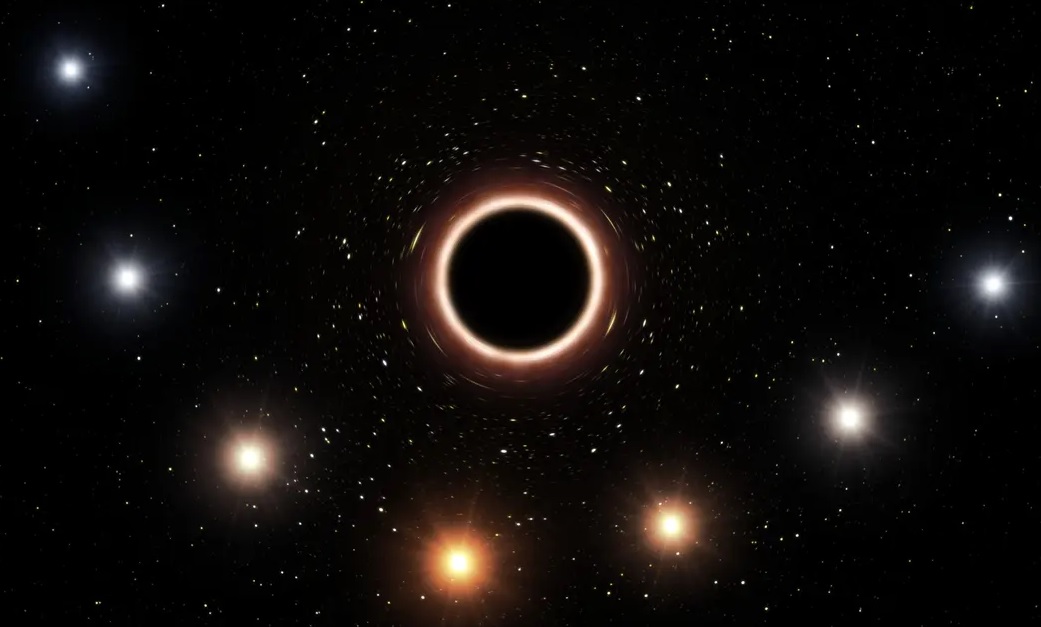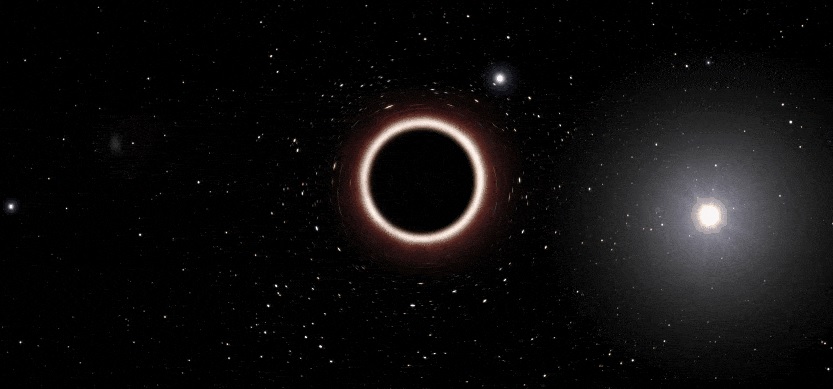The proof that Sagittarius A* is not a gigantic black hole but rather a mass of dark matter has been identified in a study team at the International Center for Relativistic Astrophysique. The group outlines the evidence they discovered and tested them in their article in the Monthly Notices of the Royal Astronomical Society: Letters.
For some years, the scientific community has agreed that there is a mass at the core of the Milky Way galaxy and that the group is a huge Black Hole –designated Sagittarius A*. Its presence was never physically proved, but instead, the behavior of the bodies around it was deduced. In this new endeavor, the researchers argue that another sort of mass can create the same responses by other entities and really can contribute to explaining some abnormalities.
In 2014, astrophysicists faced a situation which they couldn’t understand—a gas cloud termed G2 moved in the close enough position of Sagittarius A* to destroy and draw the black hole within. The gas cloud went on unscathed, instead. The researchers in this recent endeavor argue that because Sagittarius A* is not a black hole but is a mass of dark matter, G2 may survive its trip through Sagittarius A *. To conclude, they developed a simulation of the Milky Way, where a group of dark matter replaced Sagittarius A* and let it run.
By that, the Milky Way might be operated as if there was a black hole in its center—nearby, for example, S stars would be the same as the rotating curve of the outer halo of the Milky Way. The scientists continued, arguing that such a mass consisted of darknesses that belonged to the same category as fermions. If the simulation had to be clumped together, it would have traits remarkably similar to a black hole — the most extreme of which were the exceptions.
Supermassive black hole and buddies
Every galaxy, including our Milky Way, is filled with a supermassive black hole with millions to billions of times the Sun’s weight. Astronomers are still looking at why a vast black hole is commonly at the center of the galaxies. The potential that supermassive holes have pals is connected with one common thought. To grasp this theory, we must travel back to 100 million, the age of the earliest galaxies. They were around 10,000 times less massive than the Milky Way, far less than today’s galaxies. The black holes fell to the heart of their host galaxy, the center of gravity.
Since galaxies grow through fusion and colliding, galaxy crashes will lead to gigantic pairs of black holes – the critical component of this scenario. The black holes clash with one other and also expand in size. It is estimated to be a black hole more than a million times the mass of our son. Such a companion, then my colleagues and I would have discovered its impact on the orbit of SO-2. But this doesn’t mean that there can’t still be a more minor black hole partner. An item like this cannot modify the SO-2 orbit in a way that we can measure readily.






